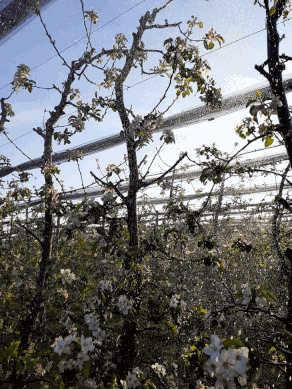Irrigation by rain begins to develop with the invention of sprinklers and light steel pipes with quick couplings. As production and construction costs were high, the aim was to improve and reduce the cost of sprinklers, aluminum pipes and efficient pumping plants. By reducing costs, the range of application of rainwater irrigation has also increased. But despite all the innovations and improvements in rainwater irrigation techniques, over the past century many farmers and producers around the world have used surface irrigation techniques. The reason for this was the lack of information on advanced technologies and the cost of switching their outdated methods to a more efficient method of irrigation. Rainwater irrigation currently dominates worldwide use.
The basic components of any rainwater irrigation system are:
- water source such as a reservoir, well, canal or watercourse,
- a pressure pump driven by an internal combustion engine or an electric motor, but not required if the water in the source is pressurized,
- network of main pipes that supply water from the pump to the distribution pipes,
- distribution pipes or laterals that supply water from the main pipeline to the sprinkler,
- sprinklers that spray water on the ground and that are installed at the correct distances to evenly spray water and
- flow control valves
When the sprinklers are evenly distributed, the irrigation system provides a relatively uniform distribution of water over the irrigated area. Sprinkler systems are typically designed to deliver water to the soil at less than its infiltration, because then the amount of infiltrated water at any time depends on the amount of water delivered and the operating time of the sprinklers rather than the ability to absorb soil.

Rainwater irrigation has many advantages, but also disadvantages. If the irrigation system is optimally designed and well maintained, high efficiency and water savings can be achieved. As already mentioned, rainwater irrigation does not depend on the infiltration capacity of the soil, but adapts to it. No terrain preparation is required, which is a great advantage over other irrigation systems because it does not require major preparatory work. Depending on the growth stage of the plants, it is possible to adjust the intensity of irrigation. For example, in the germination phase, plants need little water, so low-intensity irrigation is carried out. The system can operate at low flow at the source and adapt to the amount of water available.

The disadvantages of rainwater irrigation are mainly of a financial nature. Initial costs are higher than for other irrigation systems, but very expensive leveling is not required. There are also significant costs for the energy required to supply pressurized water. In order to minimize these costs, it is necessary to choose the optimal supply unit. It must provide the pressure and flow required on the sprinklers, and at the same time it must not be oversized as this further increases the cost of the irrigation system. Another disadvantage of such a system is the removal of water by wind if irrigation takes place in windy conditions. Evaporation of water during dry weather may also occur.
Rainwater irrigation systems are divided into two groups depending on the position of the sprinkler: stable and mobile. In stable systems, the sprayer remains in a constant position, while in mobile systems, the sprayers are moved in a circular or rectilinear direction using laterals. Stable irrigation systems most often use stable systems, which require very little field work during the irrigation season and can be fully automated.
Today, rain irrigation dominates in landscape application all over the world. It is used in systems with small pop-up sprinklers typically used in backyards, all the way to systems with large pop-up sprinklers used to irrigate sports fields. In landscaping, the water used for irrigation can be 25 to 70% of total consumption, depending on the location of the system. The largest share of water used to maintain the landscape is lawn irrigation. Lawns require more water than most plants, but they are often over-watered, which is the reason for so much water consumption.

Choosing efficient irrigation systems can mean applying very advanced technologies and expensive equipment. But choosing expensive equipment is not the only factor in designing a quality and efficient system. Sometimes it can be just a simple adjustment of watering time during the winter months or during each season. The combination of advanced watering technologies and products with a well-designed system, installation and maintenance provides an efficient irrigation system that has been proven to reduce water use and ensure plant health.
Read more








